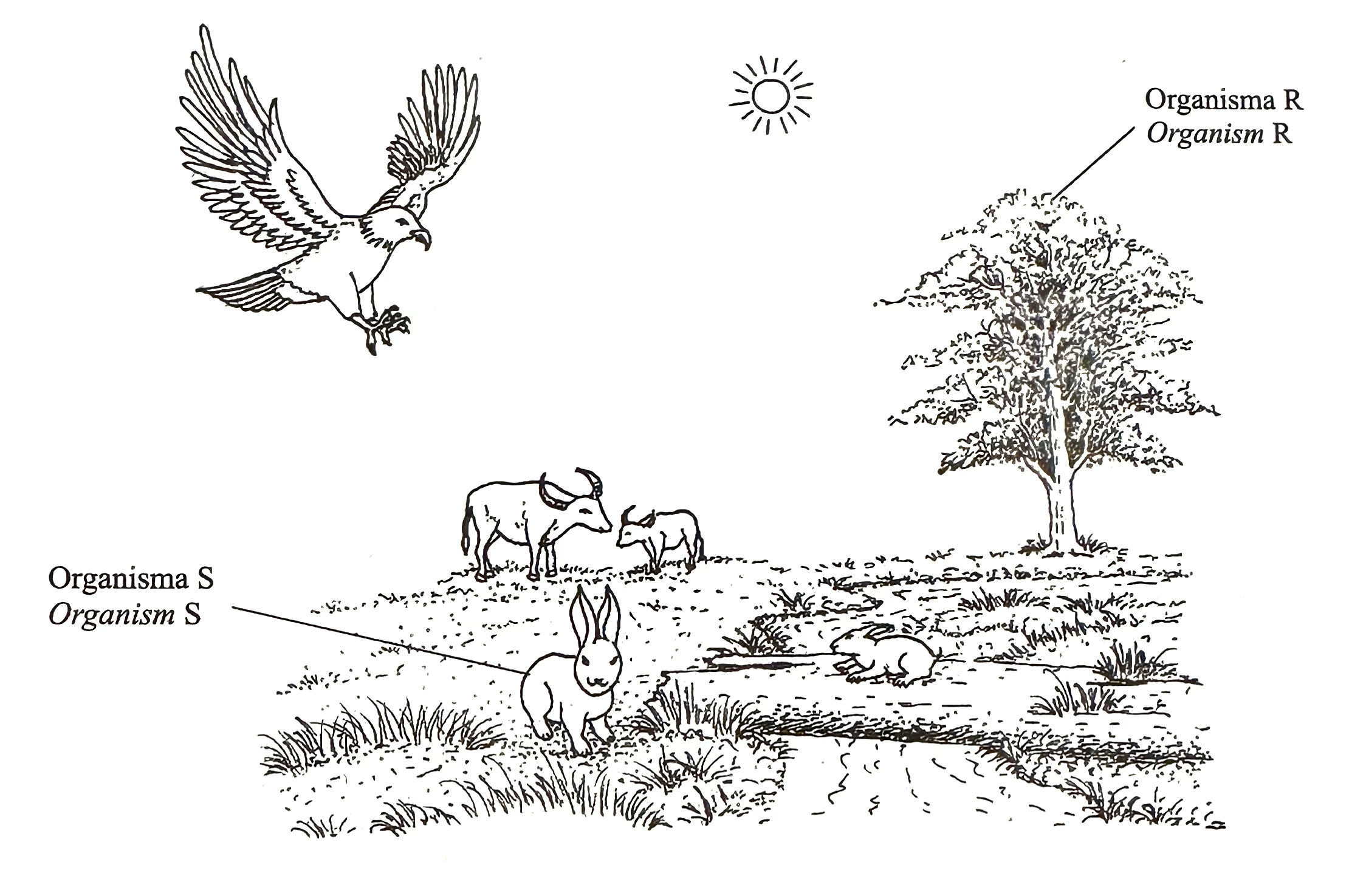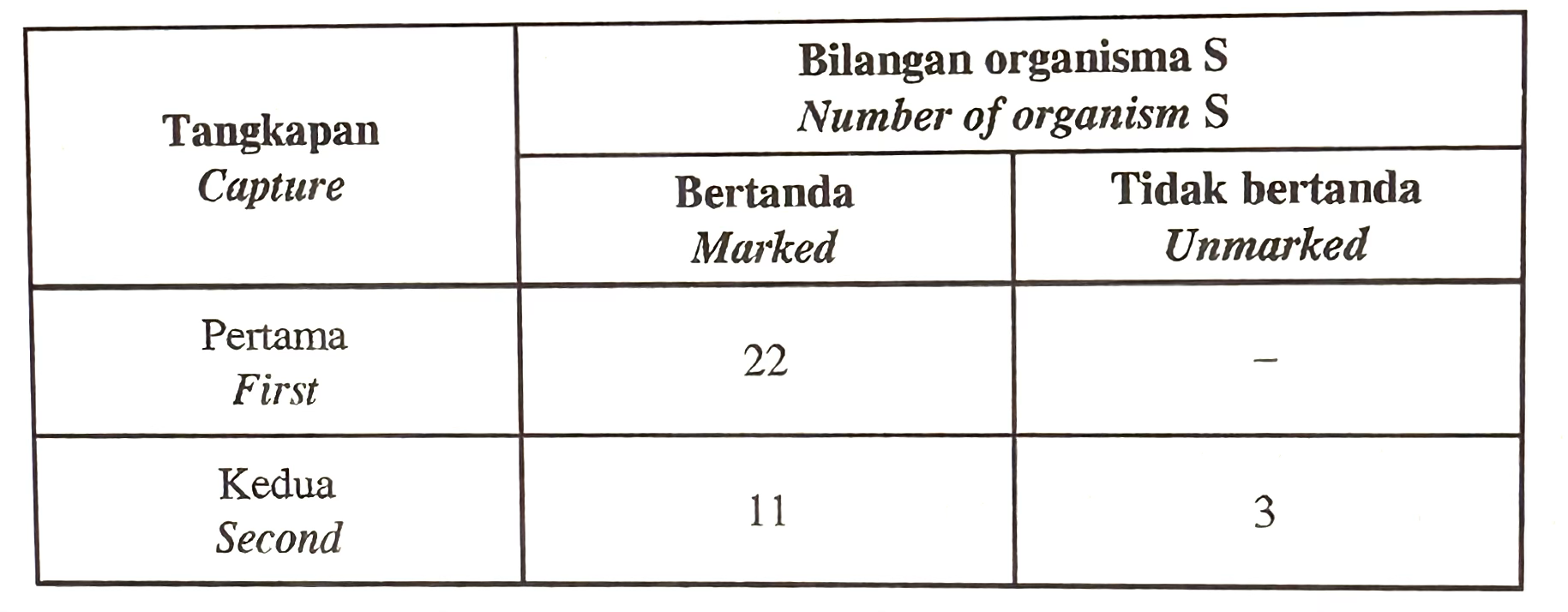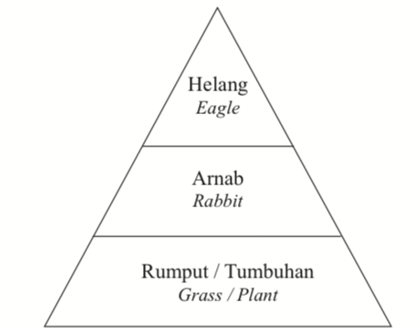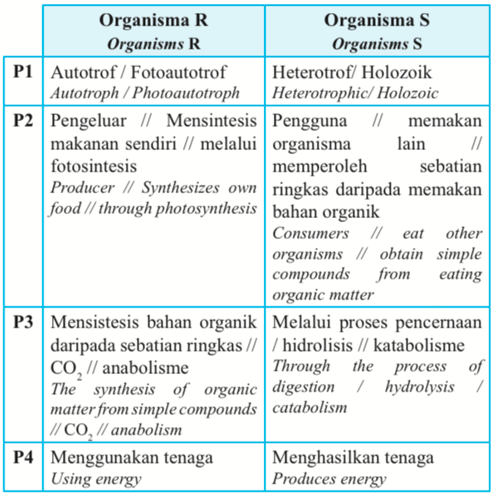Question 6:
Diagram 6 shows a grassland ecosystem.

(a) State two abiotic components in Diagram 6. [2 marks]
(b) Construct one pyramid of numbers that involves three organisms in the ecosystem in Diagram 6. [1 mark]
(c) Explain the differences between organism R and organism S based on their nutritional habits. [2 marks]
[adinsster block=”3″]
(d) A group of students conducted a field study to estimate the population size of organism S by using the capture-mark release-recapture technique. Table 1 shows the results of the field study on the population of organism S.

Calculate the population size of organism S. [3 marks]
Answer:
(a)
Temperature // Light intensity // Topography // Microclimate // Air humidity // pH value
(b)

(c)

(d)
$$ \begin{aligned} &\text { Population size : }\\ &\frac{\text { Number of first capture } \times \text { Number of second capture}}{\text { Number marked organism of second capture }} \end{aligned} $$
$$ \ frac{22 \times 14}{11} $$
= 28
Diagram 6 shows a grassland ecosystem.

(a) State two abiotic components in Diagram 6. [2 marks]
(b) Construct one pyramid of numbers that involves three organisms in the ecosystem in Diagram 6. [1 mark]
(c) Explain the differences between organism R and organism S based on their nutritional habits. [2 marks]
[adinsster block=”3″]
(d) A group of students conducted a field study to estimate the population size of organism S by using the capture-mark release-recapture technique. Table 1 shows the results of the field study on the population of organism S.

Calculate the population size of organism S. [3 marks]
Answer:
(a)
Temperature // Light intensity // Topography // Microclimate // Air humidity // pH value
(b)

(c)

(d)
$$ \begin{aligned} &\text { Population size : }\\ &\frac{\text { Number of first capture } \times \text { Number of second capture}}{\text { Number marked organism of second capture }} \end{aligned} $$
$$ \ frac{22 \times 14}{11} $$
= 28